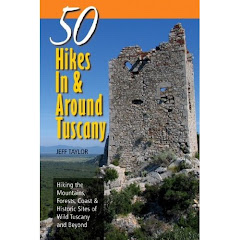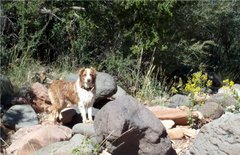Distance: 1.5 miles round trip (2.4 km)
Elevation: 5,200 - 5,280 feet (1,585 - 1,610 m)
Difficulty: Easy
Time of Year: September - May (avoid heat of summer)
Piedras Maracas canyon is the northernmost section of Petroglyphs National Monument, located on the northwestern suburbs of Alburquerque, New Mexico. The national monument was created in 1990 to protect some 24,000 images carved into the volcanic rocks of a 200,000 year old lava flow by the ancestral Puebloan peoples of the Rio Grande Valley. The rapidly expanding suburbs of Albuquerque were threatening to these cultural treasures with vandalism, being demolished for subdivisions, and otherwise being tarnished without proper management. While some of the petroglyphs date back to more than 3000 years, the majority of them are considered of the Rio Grande Style of the 15th century, after many of the Puebloan groups of the southwest abandoned their cliff dwellings during a mega-drought and migrated to the Rio Grande Valley.
 |
| Sandia Mountain is visible across the Rio Grande Valley from the top of the mesa |
Petroglyphs National Monument contains a number of different sites to visit. Piedras Marcadas is the furthest north site and can be tricky to find with the various housing developments of the area making for a maze of partially constructed roads and subdivisions. It is best to start at the National Park Service Visitor Center to get oriented and then ask for a map and directions to the site. To get to the visitor center, take the Unser Blvd Exit (#154) off of I-40 and drive north 3 miles to Western Trail. Turn left and follow it west until the road ends right at the visitor center.
Piedras Marcadas canyon starts at a small parking area right next to a housing development. The trail starts on a sidewalk paralleling the wall at the edge of the backyards of homes. But, soon it heads off into the undeveloped canyon, with volcanic walls rising about 100 feet above the sandy bottom. In spring, there will be fields of purple phacelia flowers, with white evening primroses mixed in. It won't take long to see the first petroglyphs on the rocks above. The main route is a wide sandy trail, but numerous side routes branch off to see large petroglyphs on the boulders above.
 |
| The view down Piedras Marcadas canyon with the "volcanoes" visible in the far distance |
Follow the contour of the rocks. Virtually all petroglyphs are located on south or southwest facing slopes. No reason to search the north-facing slopes. The reason for this is hypothesized to be that during the summer most people were working on tending their fields of corn, squash, and beans along the banks of the Rio Grande. But, in winter, outside of cultivation season, they would have a lot of time available to work on other crafts, as well as, to work on the tedious task of carving images into the rocks. As it can be chilly in this region at 5,000 feet in winter, the south-facing slopes get more of the winter sun, thus melting any ice that may be present or otherwise just being a lot more comfortable working conditions.
 |
| Evening primrose in bloom |
Continue contouring the rocks and then head through a gap into a large sandy expanse. As you continue toward the back of the canyon, there is a distinct side trail that branches right. At the end of this route is a cove in the rocks containing numerous interesting petroglyphs.
 |
| A kokopelli along with other symbols |
After spending an hour or so exploring the petroglyphs, just return following the main route across the sandy bottom back to the parking area.








































